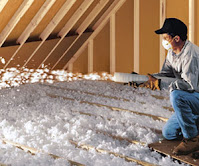
Insulating your attic is crucial for keeping your living space comfortable and decreasing your energy bills. There are many things you need to know about installing insulation in your attic.
Proper installation is necessary for your attic insulation to be effective. Your comfort and utility bills will be negatively impacted if the attic insulation is not installed correctly.
Ensure that your attic is properly ventilated before installing insulation to maintain the right levels of moisture and reduce the risk for mold growth. An attic ventilation system can help prevent moisture and potential mold because it creates a continuous upward air flow.
Loose-fill insulation (also known as blown-in insulation) is typically used in open attics. Loose-fill insulation creates a complete thermal blanket to decrease the transfer of heat. Blown-in insulation also fills corners in the attic and makes your existing home more comfortable and energy efficient.
Air leaks should be sealed before adding insulation for additional energy efficiency. Sealing air leaks will plug penetration points to prevent air transfer which helps with energy savings.
Installing spray foam insulation in your attic seals air leaks and adds R-value. Spray foam is applied along the roofline to seal the very top of your home and help prevent temperature fluctuation.
Contact a qualified insulation contractor to install spray foam insulation in your attic. A professional contractor will assist to make sure you have proper ventilation in your attic and the right R-value.
Contact our office to inquire about attic insulation for your home or business.
